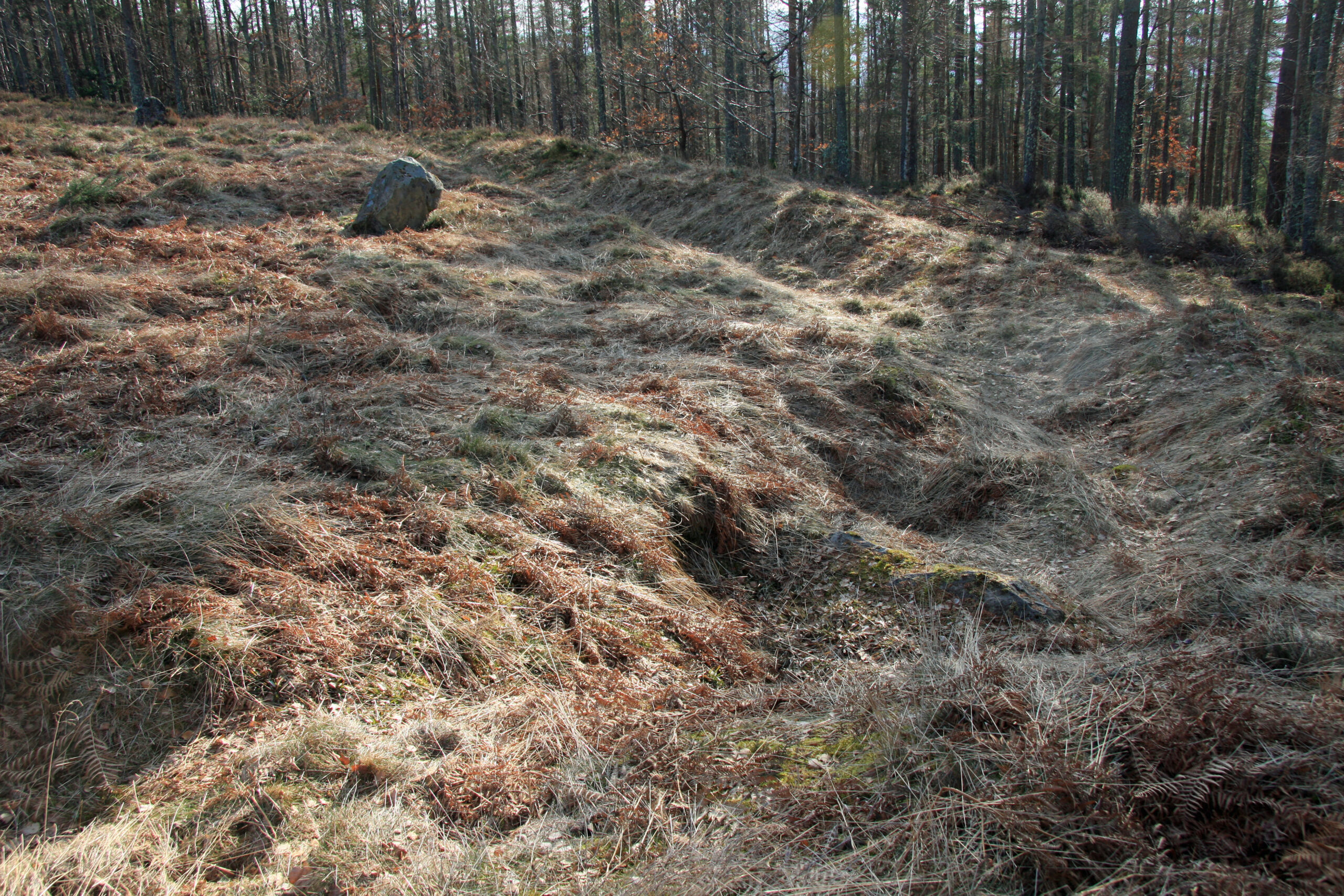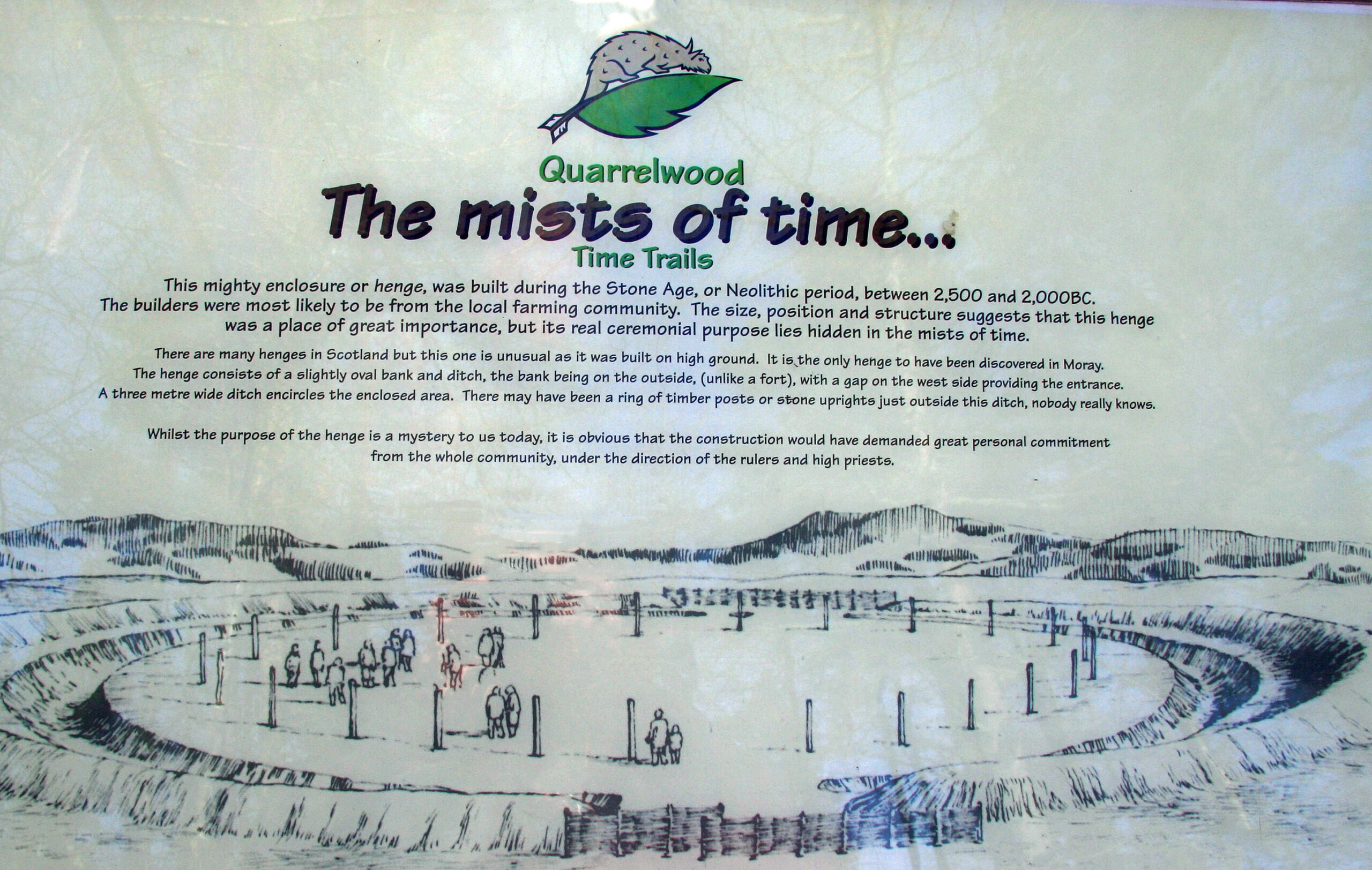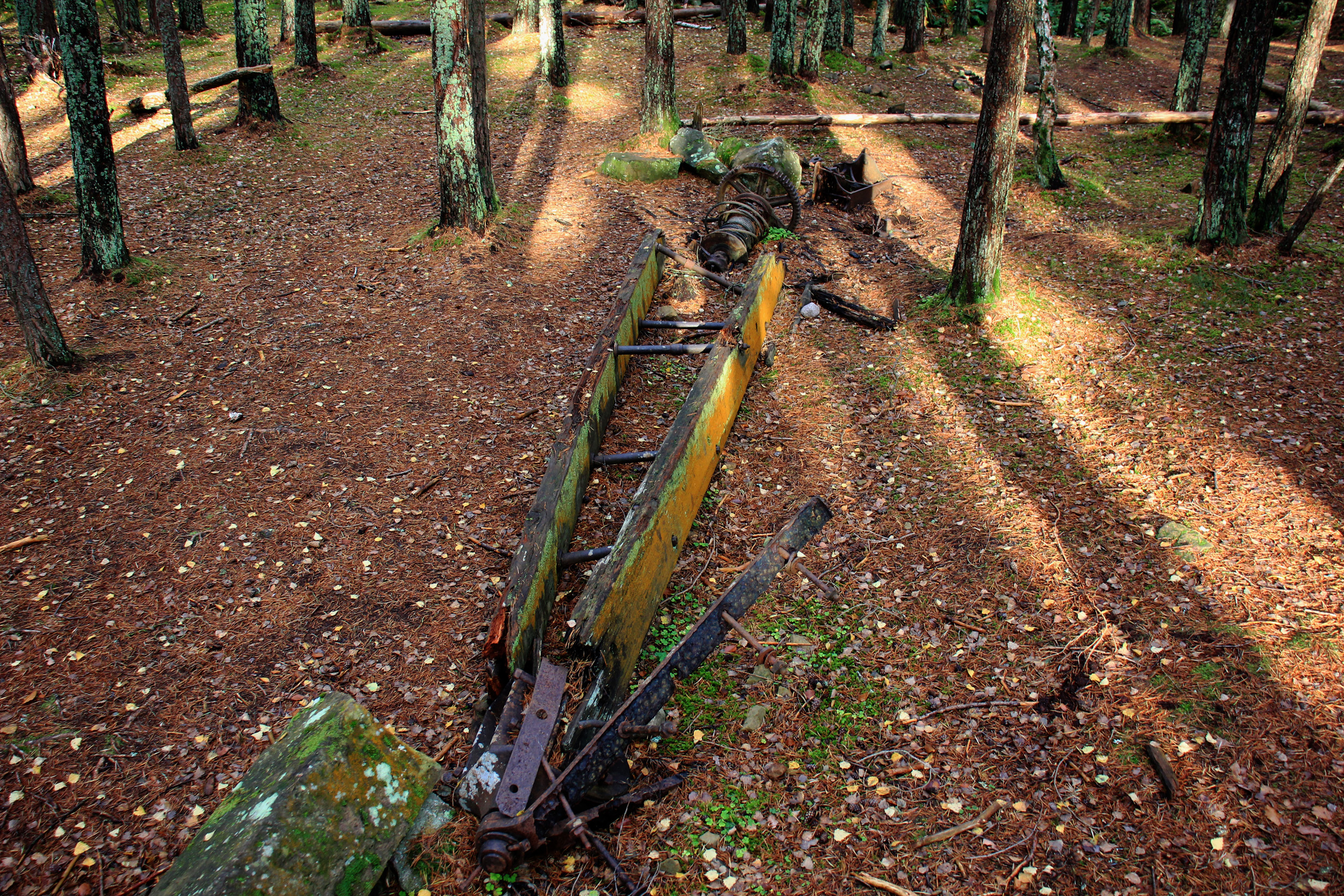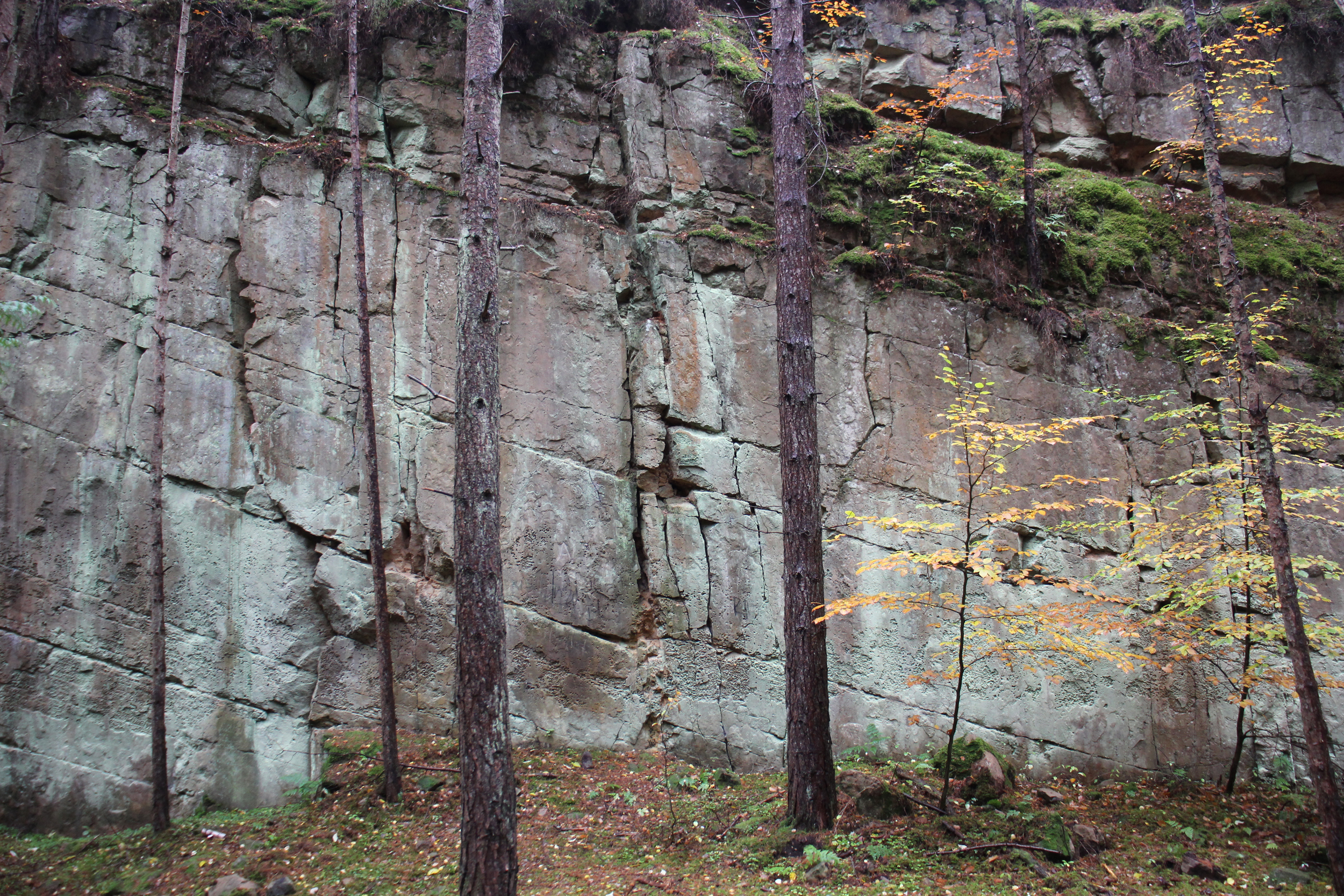Evening walk in the Elgin Quarrelwood, visiting the prehistoric Henge and Crownhead Quarry: Wednesday, July 6th 2022
Report by walk leader, Dave Longstaff
On a gloomy, although dry, evening on 6th July 15 members of the MFC gathered at Brumley Brae car park on the edge of Quarrelwood with an intent to visit the Henge and then Crownhead Quarry.
Steadily following one of the uphill paths through the woods after about 25 minutes the Henge came into view in a clearing deliberately kept clear of trees. Unfortunately during the summer months the height of bracken obscures many of the features but nevertheless, we could make out the 3 metre ditch and some of the large boulders which may possibly have originally comprised an inner stone circle of the enclosure. The enclosure measures 47×43 metres and it is thought to have been a ceremonial site because it wasn’t easy to defend, not on a hill top, and had no water source. It is possibly 4,000 years old. The only find, in 1956, was a flat axe head mould similar to Scandinavian models.
A 10 minute walk southwestwards from the Henge brought us to Crownhead Quarry, a Permian aged (about 250 million years old) sandstone quarry showing beautifully exposed dune bedding planes. We don’t know a lot about the use of Crownhead stone, or dates of opening and closing, but by looking at old maps we know it didn’t feature on the 1873 O.S map but the quarry does feature on the 1906 map. It is the only quarry in the wood which still contains relics of quarrying, winch gear and a crane boom being examples and one interesting feature of the quarry is the lack of drill holes, plug and feather marks or chisel pick marks, features which figure prominently in most of the Quarrelwood quarries.
There is a record of an unidentified bone being found in the quarry, a poor show compared to fossils found in many of the Quarrelwood quarries. We then talked about the fossils found in Cutties Hillock, another quarry, to be found near the top of Quarrelwood, and how they were important tools in dating of some of the rocks in the wood. Fish fossils from Upper Old Red Sandstone which are river deposited rocks, about 380 million years old, had been found in the 1800s in the lower quarries and then around 1883 reptile fossils were found at Cutties Hillock near the top of the hill, presumably from wind deposited rocks in a semi-arid environment: aeolian rocks.
To the naked eye the rocks containing fish fossils and reptile fossils were almost indistinguishable which led to a controversy about the age of the reptile bearing .This was resolved by comparing the fauna with similar fossils from South Africa and Russia.
In the early 1890s the age of the Cutties Hillock rock was then agreed by most workers to be New Red Sandstone (Permian or Triassic) and after 1894 a Permian age was suggested which subsequently became the accepted date, around 250 million years old.
After a brief exploration of the quarry the party then began the outward trek, following the inbound path, back to the car park having had a brisk, but enjoyable, 2 hours of woodland walking.




